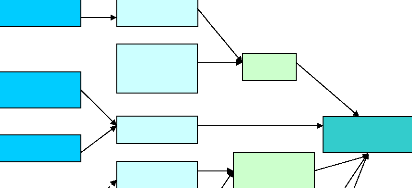1.2. Research Questions
The main research question of the thesis is: Will ASECNA meet the
needs of African Air Navigation for the 21st Century?
Responding to that question requires that the following
intermediate questions are dealt with:
6 ASECNA region
7 Africa and Indian Ocean
1. What are the needs and the priorities of African Air
Navigation for the 21st
century?
2. Are CNS/ATM systems the suitable tool with regard to regional
characteristics?
3. Will ASECNA's modernisation strategy respond effectively to
the needs?
1.3. Objectives
The objectives of the study are to:
1. Examine the state and the performance of air navigation
service provision in
ASECNA
2. Study the potential benefits of CNS/ATM systems to the
region
3. Analyse ASECNA's modernisation plans 1.4.
Methodology
This research is based on an analytical approach to assessing
ASECNA's capability to respond to airspace users' needs and requirements and
regional air transport's interests. To answer to the first research
question that aims at defining the needs and the priorities of African
Air Navigation, we process as follows:
First, the region's air transport industry is assessed.
This is done by examining local air transport characteristics:
1. Analysis of air travel demand
2. Assessment of air carriers types
3. Examination of air carriers performance
4. Examination of airport and alternative transport
infrastructures
5. Overview of regulations and the factors that influence air
traffic.
Secondly, the air navigation system's performance is
studied, by analysing key performance areas and related indicators:
1. Traffic demand, Capacity, Delays
2. Complexity, Safety, Aircraft proximities
3. Performance of CNS and Met systems.
4. Fragmentation, Cost Effectiveness
5. Flight efficiency
6. Cooperation.
The analytical framework used is described in figure 1.2
below. The structure is based on a model developed by the Eurocontrol
Performance Review Commission to assess European Air Traffic Management
performance. It has been adapted for the present study.
Figure 1.2: Analytical Framework of ASECNA's performance
analysis
|
Performance
Drivers
|
|
Performance
indicators
|
|
|
|
|
ANS Key
performance Areas
|
|
|
|
|
|
|
|
|
|
|
Fragmentation
|
Service
provision
cost
|
|
|
|
|
Flight
Efficiency
|
|
|
|
|
|
|
|
Cooperation

Safety
Complexity
Traffic
demand
AIRPROX
CNS Met
Systems
Availability
Cost
Effectiveness
Capacity
Delays
Productivity
ASECNA performance
Source: Eurocontrol, Performance Review Report 8, 2005
Finally, the impact of traffic growth is estimated. We apply
forecasted growth rates to current data, in this case 2003.
To answer to the second research question, which
aims at determining the relevance of CSN/ATM systems in ASECNA, we adopt the
following method:
Based on the system's deficiencies and local characteristics
drawn from the previous performance analysis:
1. Identification of potentially suitable CNS/ATM
technologies and systems based on FANS performance during worldwide trials.
These trials are performed under certain geographic and operational conditions;
some of them match ASECNA area's characteristics.
2. Their affordability is assessed At last, the third
research question is dealt with as follows:
1. Assessment of the technology solutions adopted
2. Assessment of the implementation process, and we analyse the
strategies in the areas listed below:
a. Communication
b. Navigation
c. Surveillance
d. Met
e. Air Traffic Management
f. Training
g. Programme financing
h. Cooperation
3. Assessment of the timeframe by confronting the predicted
timetable and realized projects.
When quantifiable data are not available, interviews allow to
have an idea of the situation. Interviewees are ASECNA's high profile staff,
airlines directors, and other ANSPs' personnel.
| 


